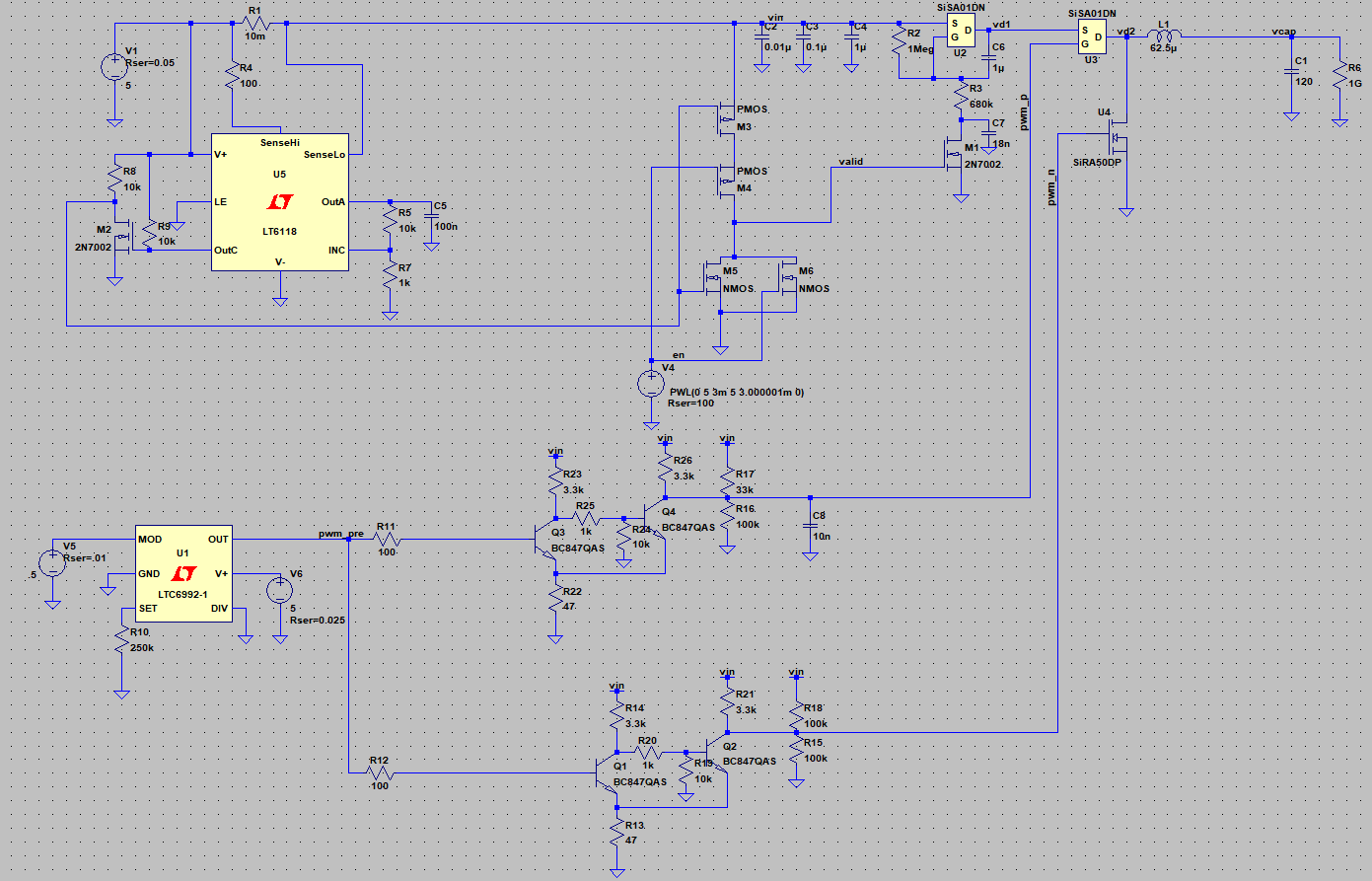
After roughly a total of 30 hours of SPICE simulation, I have managed to create a decent design for charging a 120F supercapacitor at 5A to roughly 2.5V in under a minute. There were a number of problems such as inrush current, various spikes of more than 200A at initial start, and sometimes a runaway current increase. These problems have been solved with an enable input, a modified synchronous buck converter design, and a current sense feedback.
I wasn't too happy about requiring the current sense amplifier, but I don't think there is another way to limit the current without increasing the power dissipation of the MOSFETs. I did find that the 18nF capacitor (C7 in the LTSPICE schematic) with the 680K resistor created the time constant to allow for the charging current to be limited without fully turning off the system and thus causing the supercapacitor to start to discharge.
I'm thinking of using a 74AUC1G02 instead of the discrete NOR gate implementation for simplicity reasons while testing, as again the SPICE simulation failed to converge otherwise.
One addition that I did not include in the LTSPICE schematic, is a SM74611 diode for reverse polarity protection when the charging circuit is disabled. As I'm still trying to figure out how exactly to connect the circuit as a charger with a connector (as in what point of the circuit to break), I think the most reasonable point is after L1 (again in the LTSPICE schematic) and using that low forward voltage diode (25mV at 8A!!!) seems to make a lot of sense. Given that I don't want to add in a ton more transistors to force U3 and U4 to be off when disabled, putting a diode after L1 makes more sense. I did run simulations with a generic diode for testing purposes, and there wasn't a problem with it, save for the forward voltage causing problems of course. The SM74611 would cause the simulation to run a ton slower which obviously isn't ideal.
For future additions, having a way to stop the rest of the circuit from being used while charging may be useful. Adding in another PMOS transistor with the gate tied to the inverted output of the NOR gate driving M1 would provide a simple solution. But having a device shut off when the charger is plugged in isn't exactly ideal.
Another addition is using an auto-enable for the charge circuit. Given enabling the circuit immediately after a voltage is present isn't ideal, mainly due to the fact that the LTC6992 needs about 2ms to start the PWM cycle, using a RC filter with an inverting schmitt trigger would provide this functionality due to the active low enable input ( simulated by V4). Not including this right now would allow for more flexibility in the design, such as using a microcontroller to drive the signal if desired.
I have also been toying with the idea of increasing the input voltage from 5V to 10V just to further reduce the dutycycle of the buck converter, but that would put more strain on the NMOS I would think. It does have 100W dissipation limit as opposed to the PMOS at approx 33-52W (depending on junction temp) so offloading it may be useful without reducing the charging rate. More testing has to be done. However, when trying to simulate this I ran into problems with the drive circuitry for those transistors as they were stuck at voltages which causes a massive current avalanche. Though with the current sense now, this may be ok. More work has to be done of course, and this will definitely increase the efficiency.
 Dylan
Dylan
Discussions
Become a Hackaday.io Member
Create an account to leave a comment. Already have an account? Log In.